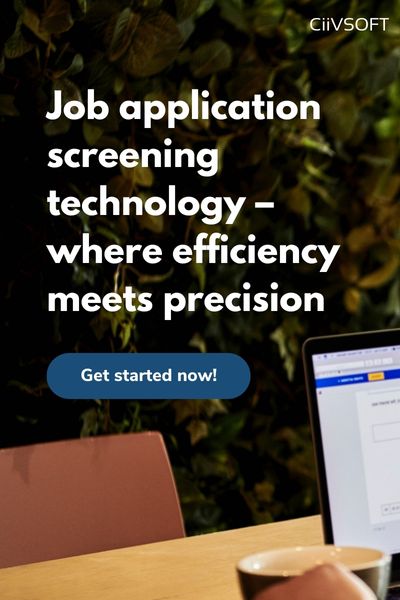What is data-driven recruitment?
Data-driven recruitment utilises numerical values, facts and information to make informed recruiting (or hiring) decisions. Talent acquisition teams can advance candidates, detect errors, look for improvements and predict future hiring trends through data intelligence.
Why should we use it?
According to recent research Deloitte determines that 78% of large companies (10,000 or more employees) rate HR and talent analytics as ‘important’ or ‘urgent’ in their recruiting strategy. Therefore highlighting the importance of a data-driven recruiting strategy to help promote more strategic decision making. By improving the quality of hire, cutting costs and reducing the overall time to hire. This is achieved through making decisions backed by statistical evidence rather than conclusive thoughts being based upon a ‘whim’.
Leading to an improvement in decision making that ensures recruiters are equipped with the right tools to place high-quality talent.
Hiring metrics that can be measured with data:
- Time to fill (the time it takes to find and hire a candidate)
- Time to hire (time period from when the found candidate accepts the job)
- Application acceptance/rejection rates
- Cost per hire
- Quality of hire
- Source of hire – what was is the route to application?
- Dropout rate
Fair motives to hire
Data-driven hiring depends on human interpretation to accompany decisions backed by statistical evidence. Without this, the gap between fact and human ‘gut’ instinct will widen. Something which can create a potential risk in making informed and fair hiring choices.
Consequently, decisions baked by data will minimise the risk of unconscious bias slipping into various different recruitment stages. Data is difficult to argue. When the facts are present, the risk of choosing a candidate because of a ‘feeling’ will significantly reduce emotive and subjective reasoning.
How to collate the data:

Previous techniques
Previously, factors that affect the recruiting process have been a consequence of so-called ‘traditional methods’. Job applications were screened manually. Interview answers were assessed independently and feedback was only collected if asked.
Before recruitment technology, it was much more difficult to acquire valuable data – particularly in high volume recruitment scenarios.
Modern techniques
The best approach to data-driven hiring is to not rely on scorecards, scraps of paper, spreadsheets and other manual methods. But to utilise technology to automatically complete these tasks for you. By doing so it can produce results that instantly help measure the recruiting process, create comparisons and keep track of the candidate journey – perfect for employers dealing with multiple applicants and live vacancies.
Where to use data-driven recruitment:
Where are candidates leaving the hiring process?
Experiencing candidate dropout is unfortunate and frustrating. However, understanding why it happened can be the key to future prevention.
Take for example a candidate who abandons their job application mid-process. Many employers will not investigate this further because (depending on the number of dropouts) it will require additional time and effort.
Instead, recruiting technology will present information through analytics, graphs and charts to reveal an overview of data. To help recruiters determine…
- Which stage took the longest to complete
- How long they spent answering pre-screening questions
Which in turn leads them to investigate…
- Difficult and repetitive stages
- Complicated processes
- Unnecessary stages or questions
How can I tackle unconscious bias?
Using data to hire, is much fairer than using intuition. Candidate screening and assessment technology can automatically process applicant CVs in order to determine a ‘best fit’ through skills and experience match. Rather than recruiting for personality and ‘culture fit’. Which can controversially (culture fit or just an excuse to discriminate?) be used as an excuse to hire specific personality traits.
What are the most effective candidate sourcing methods?
Internal? External? Job boards, agencies, a candidate database, careers page or social media? Every organisation will have different recruitment needs that majorly depend on the type of roles and talent they wish to engage.
Are you attracting high-quality talent from continually using the same sourcing method?
Let data determine effective methods. How many high-quality applicants did you receive from a job board vs your candidate database? Which were the most time-consuming and costly methods? To draw a conclusion, these are vital factors that need to be taken into consideration.
Assessment techniques



Analysing the data
Data interpretation is a must-have skill for future HR leaders and recruiting professionals. Real value derives from the human ability to make data-backed hiring decisions. This means that each reason to hire, time to hire and time to fill will be based on logical reasoning.
For example, if each job role is averaging at 75 job applications but only 3 suitable candidates are making it past the initial screening stage – the recruiter needs to look at the data into why this is occurring.
What approach do you take to data-driven recruiting? Let us know in the comments below or on Twitter @CiiVSOFT.









One Comment
Paramdeep Singh
Excellent post-Rosie, nicely put across that with the help of data-driven recruitment, it much easier for talent acquisition teams to look for improvements and predict future hiring trends. AI and automation in the recruitment space can help in creating a hiring plan that can get you a quality candidate without putting much effort.